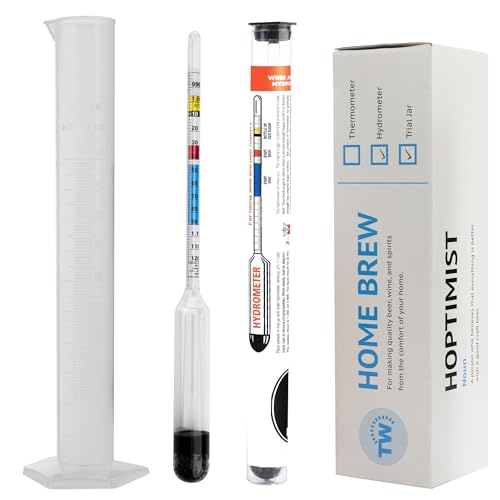I originally posted this in terrym's thread "Newbies Guide to Dry Hopping Your Beer", but I suppose it's a bit too in depth for that, so the thread got closed just as the discussion started getting interesting. I'm starting a new thread because I'm very interested in other folks' experiences:
I LOVE hop aroma and flavour, so I love dry hopping! I end up using 170g per 19L in my American-style IPA: Chinook, Willamette, Nelson Sauvin, Cascade, Amarillo, and Citra. I tried a number of different methods, but ended up preferring nylon bags weighed down with SS spoons (bag/spoons boiled first to sanitize). I much prefer the taste of whole hops to pellets. The pellets end up being more astringent and less flavourful/aromatic than whole.
People say the problem with bags is that the hops aren't exposed to the beer as much as when they are put in freely. I've tried throwing them in loose, but like other posters, I've found they just float on top, develop a weird crust, and are a PITA when bottling (I keg these days, don't bottle anymore; more on that later). Loose hops also soak up alot of the brew! Weighing the bags down with spoons at least ensures that the hops are submerged. I put just enough spoons in to weigh the bag down, but not enough to sink it and have it sit on the trub, mainly because I don't want to have to reach way down into the brew to get it. Also, when it's time to get the hops out, I can use my hands (sprayed with Starsan) to squeeze my precious brew out of the hops. After a while of doing this, it dawned on me that the spent hops still retained ALOT of their aroma, so I started actually pressing and squeezing the hop bags while they were still submerged in the brew. I now do this for a few minutes before I remove the bags, ensuring the beer is flowing over and through them, getting all that flavour and aroma (and giving them that good final squeeze after they're out to get my beer out of them!)
In order to dry hop this way, you obviously can't be using carboys, as you can't fit the bag in through the neck (or wouldn't be able to get it out!) I used to use plastic buckets, but made the leap to the Brewtech SS fermenters a while ago, and do really like them now that the pain of the expense has faded.
One more interesting anecdote (this is where the kegging comes in): when I made the switch from bottling to kegging, I wasn't ready to try force carbing on the very first batch I put into a keg, so I just batch primed it like I had been doing previously with bottles. All good. On the second batch I tried force carbonating for the first time, and there was a dip in quality of the finished beer. One of my more discerning friends went from singing the praises of my brew to not being able to drink it at all! This prompted a rash of research on my part, scrolling through the forums to see what could be the matter, and a number of blind taste tests among a few friends. We tasted bottled, batch-primed kegged, and force-carbed kegged, and 100% of us could tell the difference and preferred the batch-primed kegged, then the bottled, and not so much the force-carbed kegged, which kind of had an almost lager taste creeping in, which was completely off-putting to that one discerning friend. To me it wasn't undrinkable, but was definitely inferior. I'm not 100% sure, but from my research and my own taste tests, I suspect oxygen; all the squeezing of the hops bags had been introducing oxygen into the beer, of which I was blissfully unaware while I was still bottling and on my first kegged batch because the yeast had been consuming the oxygen along with the priming sugar and saving my batches. When I tried force carbing, that didn't happen, and the oxygen affected the quality and taste of the final beer. At least that's my theory.
These days, I'm happily squeezing all the hoppy goodness out of my bags (both dry hop bags AND brew addition bags: I squeeze them around with a large SS spoon after I put them in, and wring them out with my hands after the wort cools) and batch priming my kegs, and I have to say, my IPA has by far the most hoppy flavour and aroma of any I've tried. A negative side effect is that it's ruined me on most other beers; I don't even bother ordering beer when I'm out, knowing that I'll just be disappointed.
I've been wanting to post my experience here for a long time, but haven't because I knew it was going to be a massive post and take a long time, but here it finally is. I'm interested to hear what other folks think.
Cheers, and thanks for reading if you've made it this far!
I LOVE hop aroma and flavour, so I love dry hopping! I end up using 170g per 19L in my American-style IPA: Chinook, Willamette, Nelson Sauvin, Cascade, Amarillo, and Citra. I tried a number of different methods, but ended up preferring nylon bags weighed down with SS spoons (bag/spoons boiled first to sanitize). I much prefer the taste of whole hops to pellets. The pellets end up being more astringent and less flavourful/aromatic than whole.
People say the problem with bags is that the hops aren't exposed to the beer as much as when they are put in freely. I've tried throwing them in loose, but like other posters, I've found they just float on top, develop a weird crust, and are a PITA when bottling (I keg these days, don't bottle anymore; more on that later). Loose hops also soak up alot of the brew! Weighing the bags down with spoons at least ensures that the hops are submerged. I put just enough spoons in to weigh the bag down, but not enough to sink it and have it sit on the trub, mainly because I don't want to have to reach way down into the brew to get it. Also, when it's time to get the hops out, I can use my hands (sprayed with Starsan) to squeeze my precious brew out of the hops. After a while of doing this, it dawned on me that the spent hops still retained ALOT of their aroma, so I started actually pressing and squeezing the hop bags while they were still submerged in the brew. I now do this for a few minutes before I remove the bags, ensuring the beer is flowing over and through them, getting all that flavour and aroma (and giving them that good final squeeze after they're out to get my beer out of them!)
In order to dry hop this way, you obviously can't be using carboys, as you can't fit the bag in through the neck (or wouldn't be able to get it out!) I used to use plastic buckets, but made the leap to the Brewtech SS fermenters a while ago, and do really like them now that the pain of the expense has faded.
One more interesting anecdote (this is where the kegging comes in): when I made the switch from bottling to kegging, I wasn't ready to try force carbing on the very first batch I put into a keg, so I just batch primed it like I had been doing previously with bottles. All good. On the second batch I tried force carbonating for the first time, and there was a dip in quality of the finished beer. One of my more discerning friends went from singing the praises of my brew to not being able to drink it at all! This prompted a rash of research on my part, scrolling through the forums to see what could be the matter, and a number of blind taste tests among a few friends. We tasted bottled, batch-primed kegged, and force-carbed kegged, and 100% of us could tell the difference and preferred the batch-primed kegged, then the bottled, and not so much the force-carbed kegged, which kind of had an almost lager taste creeping in, which was completely off-putting to that one discerning friend. To me it wasn't undrinkable, but was definitely inferior. I'm not 100% sure, but from my research and my own taste tests, I suspect oxygen; all the squeezing of the hops bags had been introducing oxygen into the beer, of which I was blissfully unaware while I was still bottling and on my first kegged batch because the yeast had been consuming the oxygen along with the priming sugar and saving my batches. When I tried force carbing, that didn't happen, and the oxygen affected the quality and taste of the final beer. At least that's my theory.
These days, I'm happily squeezing all the hoppy goodness out of my bags (both dry hop bags AND brew addition bags: I squeeze them around with a large SS spoon after I put them in, and wring them out with my hands after the wort cools) and batch priming my kegs, and I have to say, my IPA has by far the most hoppy flavour and aroma of any I've tried. A negative side effect is that it's ruined me on most other beers; I don't even bother ordering beer when I'm out, knowing that I'll just be disappointed.
I've been wanting to post my experience here for a long time, but haven't because I knew it was going to be a massive post and take a long time, but here it finally is. I'm interested to hear what other folks think.
Cheers, and thanks for reading if you've made it this far!











![BREWING THERMOMETER STICKERS ACCURATELY MONITOR FERMENTING BEER & WINE LIQUID TEMPERATURES 5PCS HOME BREW SPIRITS WINE LCD ADHESIVE [US]](https://m.media-amazon.com/images/I/311DDjo2X3L._SL500_.jpg)































